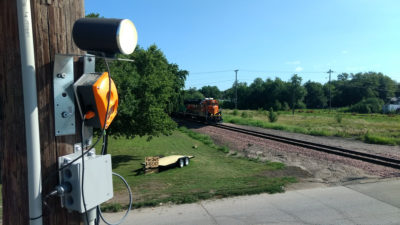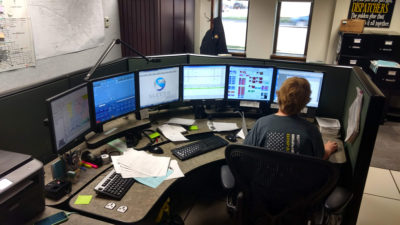
With decades of experience helping cities establish rail-monitoring systems for the safety and convenience of their citizens, Leonard Ruback added Fremont, Nebraska, to his portfolio when that city’s system went on line in May. Ruback is a senior research scientist at the Texas A&M Transportation Institute (TTI). Ruback’s work developing rail-monitoring systems began more than 20 years ago when a system was developed for the city of College Station.
“I was contacted directly by city officials after they read about the train-monitoring system we developed for Sugar Land, Texas, in 2003,” Ruback says. “Fremont has been dealing with blocked crossings on its town’s west side, impacting emergency response time. The city needed a way to inform the public and emergency services when that was happening.” (Read Sugar Land story here)
The Fremont system targets stopped trains at intersections without signalization. Ruback used LIDAR (which stands for Light Detection and Ranging) — a light sensing technology that identifies moving and stopped trains — at the four intersections that are often blocked. The information is then sent to a display in the 9-1-1 center and posted to the city’s website.

“This system is already helping residents and emergency services,” says Shelly Holzerland, Fremont’s 9-1-1 director. “Several times a day, one train stops and blocks several intersections as it waits for another train to come through. TTI’s system lets us know when a train is present so citizens and emergency personnel can take an alternate route.”
Police dispatchers and residents are monitoring the status of the intersections through the city’s webpage: https://rr.fremontne.gov/railmonitor/. Fremont is currently also developing a phone app for residents that will display the information.
Holzerland says the city, with a population of 26,000, may someday build a bridge crossing over one of the blocked intersections. Until then, she says, the rail-monitoring system will act as a solution to alert both residents and emergency services when the train is blocking that side of town so another route can be considered.